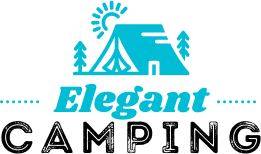Outside the wilderness, there’s nothing like a campfire to help you relax and feel at home. It can help you cook, provide warmth, a lit environment, and whatnot.
But a question remains, how hot could a campfire get? We have encountered many campers asking, how can I tell how hot my campfire is for cooking food? Or how hot is too hot for a campfire in a warmed-up environment?
One way to determine the temperature of your campfire is by examining the color of the flames. This is, apparently, the most effective way so far, though there are other ways to detect fire heat levels too.
So, in this post, we’ll discuss the potential heat output of a typical campfire, what factors could be affecting a campfire’s internal temperatures, and more.
Let’s dive in!
Table of Contents
How Can I Tell How Hot My Campfire Is?
People would recommend you estimate your campfire temperature by feeling the intensity of the fire heat with your hand. But that’s not a pretty good idea; rather, it could cause accidents.
So, how can you tell how hot your campfire is? As mentioned, you will need to determine it by examining the flame colors.
It’s an effective way, by all means, as there is no chance that you can use a cooking thermometer or any other device at that moment to check your campfire heat level.
Therefore, the best course of action would be to be aware of the heating temperature rating each flame’s hue denotes.
The Temperature of Flames in Various Colors
Many think there’s no difference in fire temperatures based on their various colors. However, this is not the case.
Each color corresponds to a distinct range of temperature, which has been discussed in detail right below:
| Flames Color | Flames Temperature |
| Blue | Up to 3000 degrees Fahrenheit |
| White | Up to 2700 degrees Fahrenheit |
| Orange | Up to 2200 degrees Fahrenheit |
| Yellow | Up to 2000 degrees Fahrenheit |
| Red | Up to 1800 degrees Fahrenheit |
Table: The Temperature of Flames in Various Colors
White Flames
White-colored flames are scorching, with temperatures reaching 2700 degrees Fahrenheit. That’s hot enough to melt most metals!
However, you will encounter this flame color in a campfire closest to the fuel source. It means the wood will have the most heat, and the flames closest to them will be white.
Blue Flames
Unlike white ones, blue flames can attain temperatures as high as 3,000 degrees Fahrenheit! That’s the hottest temperature of fire that exists on earth.
Blue flames are typically composed of oxygen and nitrogen, both very reactive elements.
So, when your campfire receives more of these two elements from the air, especially oxygen flow, it changes the flames’ color to blue.
However, like the white flames, blue flames are also seen closest to the fuel source rather than on the higher ground.
Orange Flames
Orange flames in a campfire indicate a temperature of around 2,000 to 2,200 degrees Fahrenheit, which is much hotter than the normal cooking temperature.
At this temperature, wood burns very quickly and produces a lot of hot coals and sparkles.
Yellow Flames
Yellow flames have a temperature of around 1,800 degrees Celsius. This is significantly closer to the red/orange flames, which have a temperature of approximately 1,800 – 2,2000 degrees Fahrenheit.
Yellow flames are produced when there is a lot of oxygen, which makes them burn even brighter and hotter.
Red Flames
Red flames are typically less hot than blue ones. But they are still pretty hot to be around in proximity.
The temperature of a red-colored flame can vary depending on the fuel source but is typically between 1,100 and 1,800 degrees Fahrenheit.
Three Crucial Factors That Affect Campfire Heat
There are primarily three factors that affect how hot a campfire will be:
- The types of wood you use
- The size of the campfire
- The amount of oxygen flow available.
Thus, if you want your campfire to burn at its best, you must ensure all three of these factors work in your favor, among which the pieces of wood you decide to use should be chosen wisely.
1. Wood Choice
| Hardwood | Softwood |
| Oak | Pine |
| Hickory | Cedar |
| Ash | Spruce |
| Beech | Tamarack |
The most crucial component in controlling the heat of your bonfire is the quality of wood you use.
And since there are various wood types, it’s essential to know which one makes the finest fuel for building campfires.
For instance, hardwoods like oak and hickory will burn hotter and longer, which is suitable for grilling or smoking fish or meat.
Softwoods, on the contrary, will usually burn hot at first. However, they quickly lose their heat and can even smolder and produce dangerous amounts of smoke.
Therefore, it’s always preferable to choose hardwoods over softwoods for bonfire camping.
2. Campfire Size
The size of your campfire affects how hot it will burn. Small fires won’t produce as much heat as big ones. Thus, if you want to create a huge, hot bonfire, use larger pieces of wood.
However, a smaller campfire is the way to go if you plan to conserve wood or keep your fire under control.
Some campers like to build large fires for the whole night for their cooking and warmth, while others prefer smaller ones for ambiance. Either way, it’s essential to know how the size of your fire will affect its heat output.
So before you build your next campfire, consider what kind of heat you’re looking for.
3. Oxygen Availability
Oxygen is one of the critical ingredients in fire, which plays a significant role in keeping the campfire lit.
Without enough oxygen, the fire will smolder and produce a lot of smoke. This isn’t a big ideal if you’re trying to cook over the fire or stay warm.
On the other hand, if there is too much oxygen, the fire will burn quickly and get out of control.
Therefore, the best way to control the oxygen levels in your campfire is by using a damper. This metal piece covers part of the opening at the top of the fire pit.
You can control how much oxygen enters the fire by opening or shutting the damper, which will also help maintain a steady flame temperature.
What to Cook on a Campfire
One of the best things about camping is cooking over a campfire. There’s something about the simplicity of it that just can’t be beaten.
And while hot dogs and s’mores are always a classic, many other campfire meals can be tried out if you just know how to cook them. Here are a few of our favorites:
- Foil packet meals: These are so easy to make, and you can cook anything in them. For instance, potato dishes, grilled cheese sandwiches, etc. Plus, cleanup is simple. When finished, simply discard the foil!
- Steaks – A classic for a reason, steaks are the best things you can cook over a campfire. However, ensure you have a good grill or griddle to get those perfect sear marks.
- Grilled Meat and Fishes: Enjoy a juicy grilled BBQ fish or meat while camping. These items add some variety to your camping menu.
- Vegetables – Even vegetables can be delicious when cooked over a campfire! Grilled veggies are a great way to add healthy options to your campfire meal. Plus, they’ll absorb all that delicious smoky flavor from the fire.
Many other meal items can be cooked on a campfire, and with the proper technique, you can cook them to perfection.
Regulate Bonfire Temperatures
It’s crucial to regulate the temperature of the fire to ensure that your food cooks evenly and doesn’t get burnt. Here are a few tips on how to do so:
- Start by lighting a small fire and letting it burn until the wood turns to embers. This will give you a more consistent heat source to work with.
- Once you have a substantial amount of embers, gradually add larger pieces of wood. You’ll be able to manage the temperature as a result better.
- If the flames start getting too high, you can use a water hose or bucket of water to douse them down.
Conclusion
So, we hope you have already got your answer to the question, how can I tell how hot my campfire is?” Nevertheless, if you are still in doubt, here’s a quick brief,
- Look for sparks.
- Check the color of the flames.
- Feel the heat coming off the fire.
- Take a closer look at how much smoke the fire produces.
- Touch the logs with your hand to see if that’s too hot enough to hold.
So, that’s a summary of how you can determine whether or not your campfire temperature is too hot to make a massacre.
You may also determine the temperature of the campfire you are burning based on the fuel type resource you are using and the details we described in the post regarding various fire colors.
Thus, the next time you lit a campfire in the woods, test it yourself to measure the campfire’s temperature!


